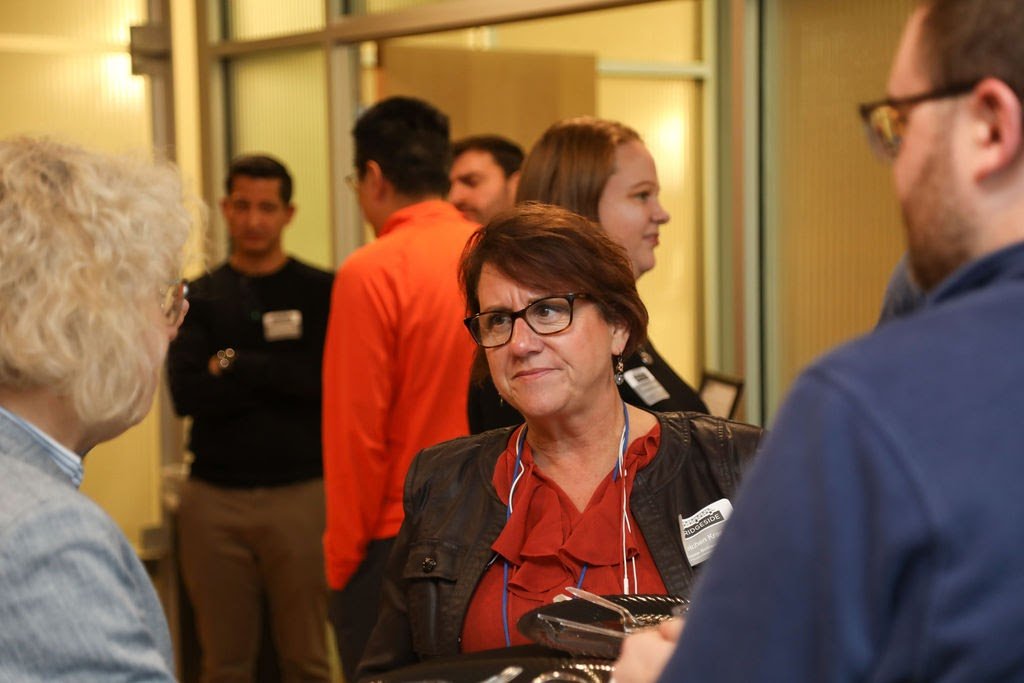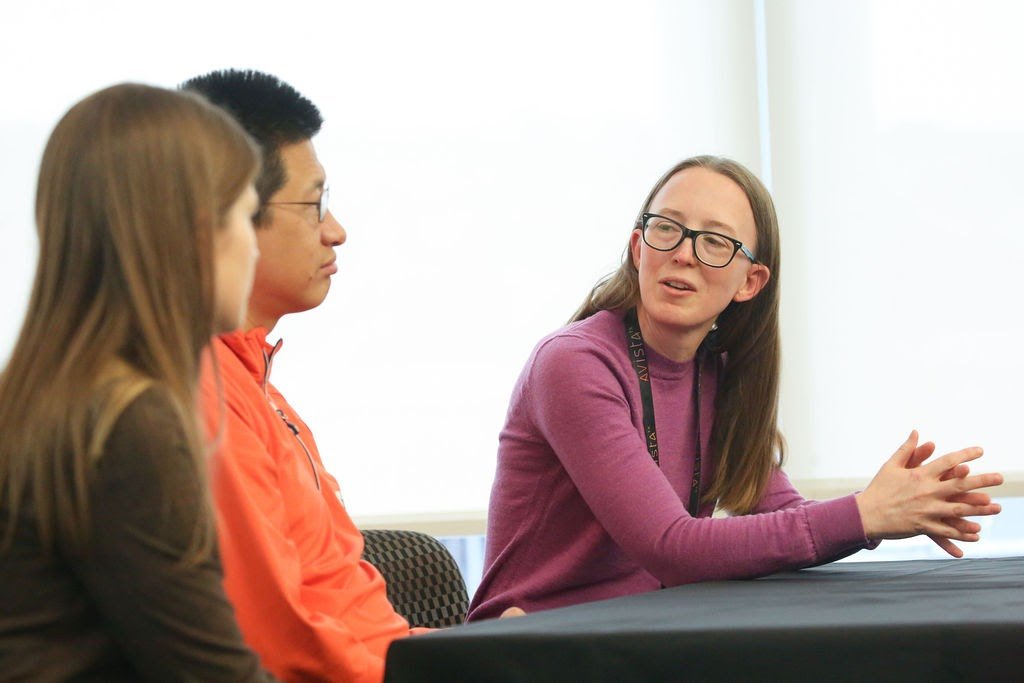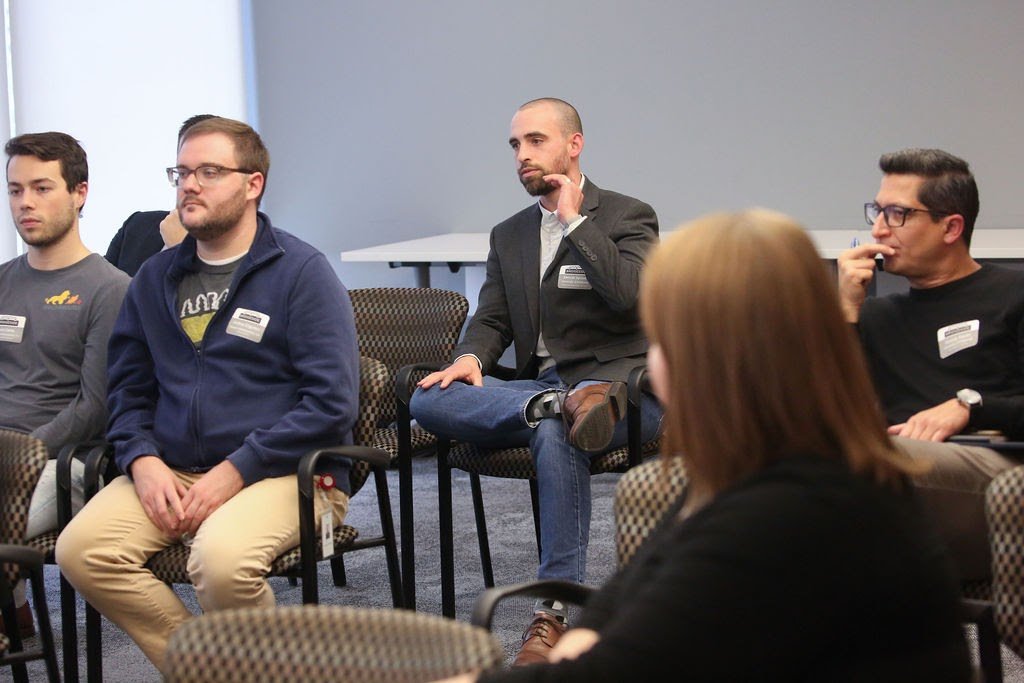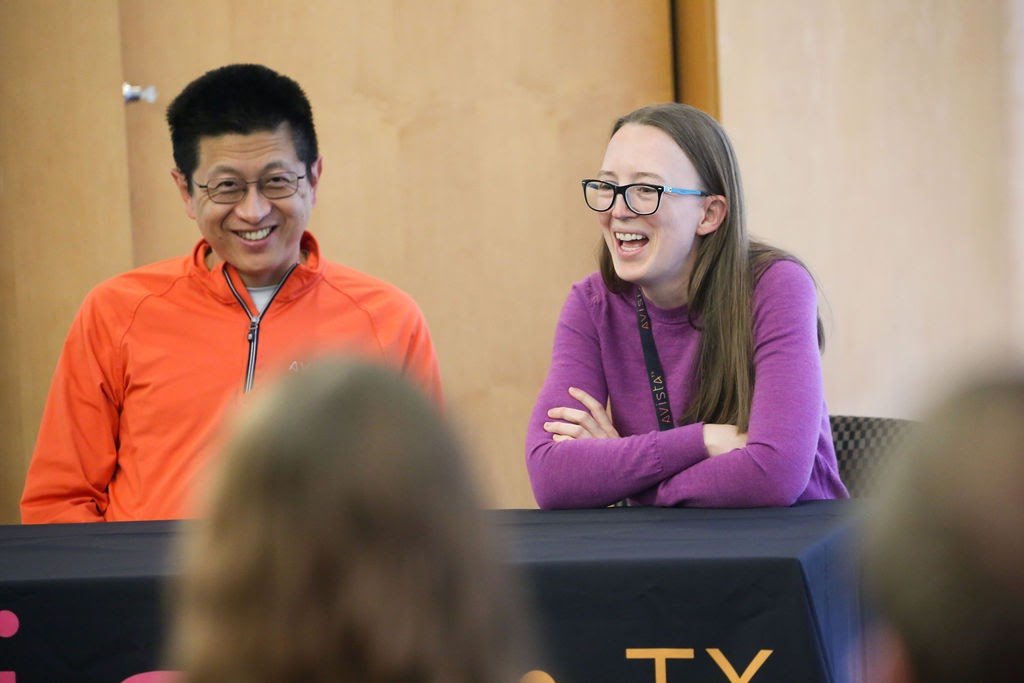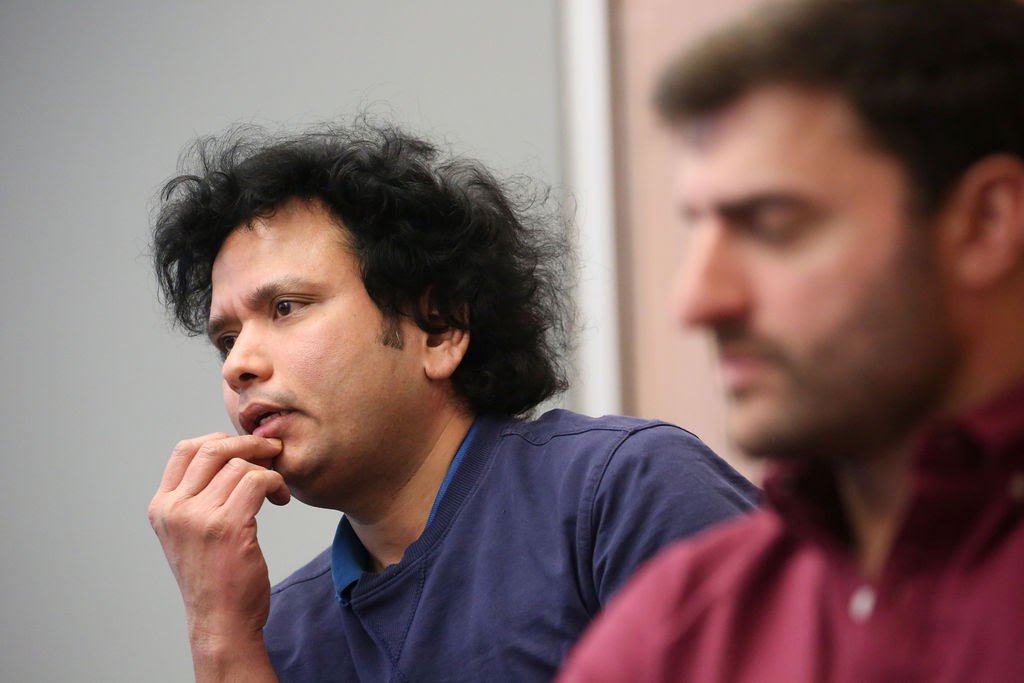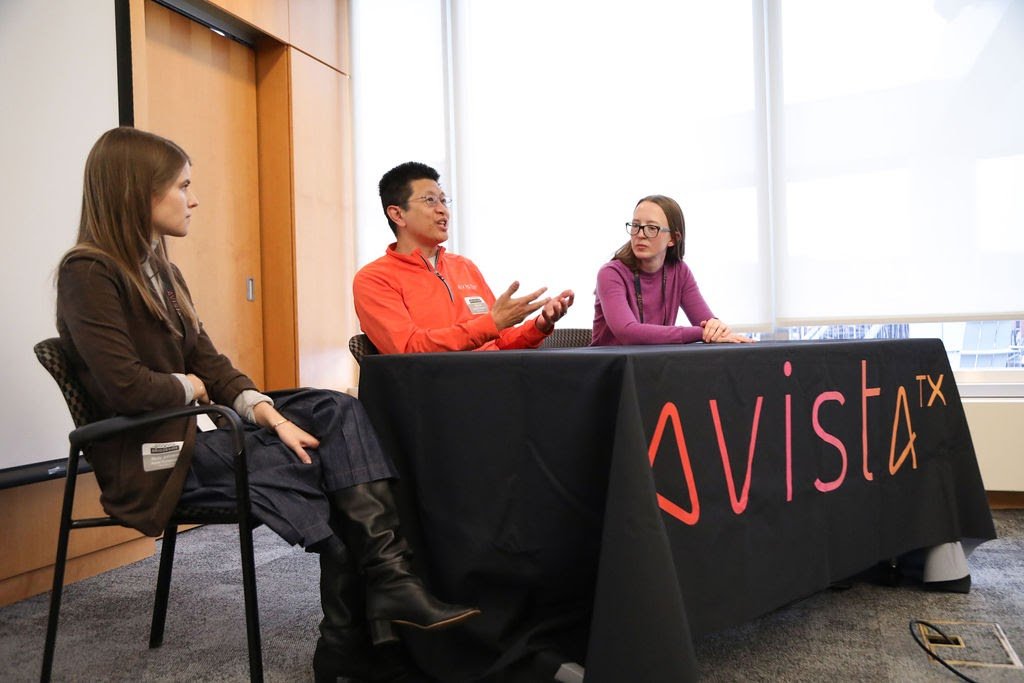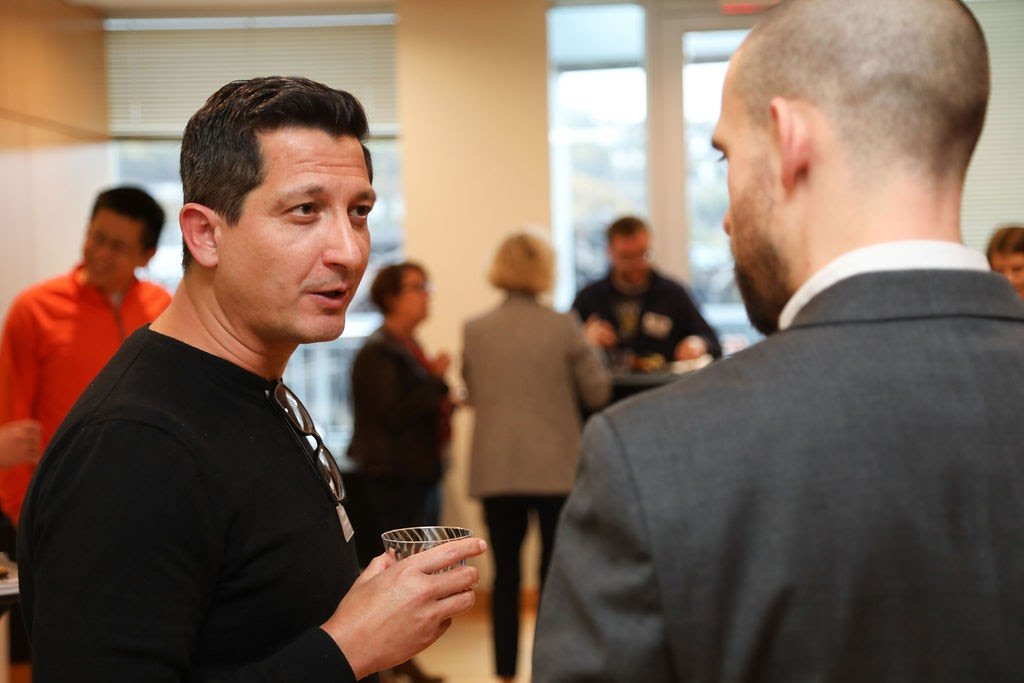Avista Therapeutics Showcases Next Generation Gene Therapies for Blindness
To discuss their approach to innovative gene therapies for retinal diseases and the current state of Adeno-associated virus (AAV), Avista Therapeutics hosted a Showcase - Vision for the Future: Creating Next Generation Gene Therapies for Blindness for the Bridgeside community members to attend and learn more!
Hosted on the fifth floor, attendees signed in and were immediately greeted with a question: “How do you quantify successful vision restoration?” Participants provided their response on a nearby whiteboard and then went on to mix and mingle prior to the event starting.
About 30 minutes later, attendees filed into the boardroom where Community Relationship Manager, Amanda Weaver introduced the host of the evening, Molly Johnson, Director, Data Science at Avista Therapeutics. Molly dove right into a 45 minute presentation about Avista's mission to develop innovative gene therapies for retinal diseases and their scAAVengr platform.
“Avista is focused on developing therapies specifically for inherited retinal diseases, which are genetic based retinal dystrophies. But there are also complex retinal diseases that can benefit from AAV therapies as well, such as age related macular degeneration,” shared Molly.
She went on to explain how Avista designed its ScAAVengr platform to identify, develop, and evaluate various viral vectors which may have therapeutic potential. ScAAVengr focuses on AAVs because they can be easily engineered to deliver genetic material to induce a therapeutic response. During the process, the platform assigns genetic barcodes to individual AAVs so they can be identified after administration and ranked on how well they deliver useful genetic material.
More so, Avista recently made a deal with Roche for $7.5M where Avista will use the scAAVengr platform to develop intravitreal AAV capsids. The intravitreal aspect of the name refers to the gel-like fluid in the eye where the potential therapy would be administered. A capsid is the protein shell of a virus. Suitable intravitreal AAV capsids could be used to develop new eye disease therapies.
Following the presentation, Rob Lin, PhD, CFA, CEO at Avista Therapeutics and Leah Byrne, Assistant Professor, Department of Ophthalmology, University of Pittsburgh, CSO at Avista Therapeutics came up to the front to answer questions and talk more about what Avista is focused on and excited about.
“I think one of the things that we’re really focused on at Avista is the concept of deliveries of gene therapies,” explained Rob. “It’s something that perhaps has been overlooked in the past, but is becoming more and more relevant and important.”
Rob went on to say “What we’ve been able to demonstrate at Avista thus far and with our partnership with Roche is that we’ve been able to take the scAAVengr platform and apply it to the organ of the eye and find really commercially useful technology.”
However, it’s not been the easiest path.
“Delivery is still a major bottleneck that’s preventing gene therapies from being efficient and effective for patients,” informed Leah. “One thing I appreciate about our approach is that we’re a very patient-oriented company; we’re always keeping the patient in mind. We are thinking about delivery because that’s where we need to be thinking, but at the same time we’re really focused on the clinic and getting into the clinic as fast as we can.”
Leah also revealed that AAV was discovered in Pittsburgh by Bob Atchison and Wallace Rowe at NIH, which makes their work even more special, hitting so close to home.
When the presentation concluded, attendees stuck around to enjoy a complimentary happy hour and small bites and most importantly, continued conversations and connections with others in attendance that evening!






